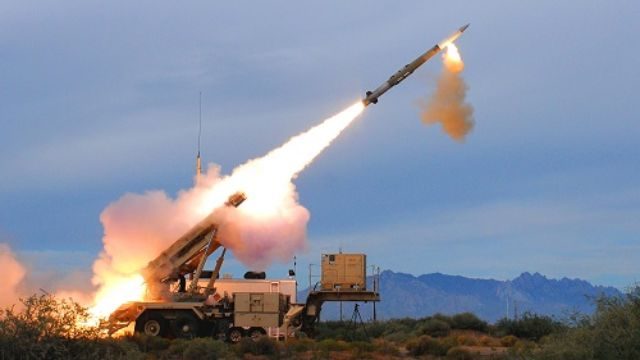The German government is unaware of any deliveries of Patriot air defense missiles to Ukraine, according to a statement from Berlin. “I cannot confirm that anything is currently underway. I am not aware of this,” a spokesperson for the German Ministry of Defense said on July 17.

The German government’s statement comes in the wake of news on July 16 that the first Patriot missiles had already arrived in Ukraine. Journalists questioned the U.S. president at Andrews Air Force Base about the timing of the first Patriot missile deliveries. He responded, “They are already being delivered.” “They’re coming from Germany, and then Germany replaces them. And in all cases, the United States is fully reimbursed,” Trump emphasized.
In recent days, the U.S. president’s statements regarding Ukraine have intensified, with the White House now viewing Ukraine more as an ally than “the cause of the war in Ukraine,” as Trump initially suggested earlier this year. For example, on July 14, Reuters reported that Berlin and Washington would decide on sending two Patriot air defense systems to Kyiv within days or weeks.
The discrepancy between the two sides could stem from several factors. It’s possible that the missiles are being supplied by other NATO countries rather than directly from Germany, or there may be a delay in information reaching the German government. Additionally, Patriot deliveries are part of complex coordination among multiple countries, which could explain the lack of clarity.
Ukraine faces intense Russian air attacks, making Patriot systems vital for its defense. The U.S. and its NATO allies, including Germany, are actively discussing the provision of additional air defense systems. In July 2025, the U.S. resumed arms deliveries to Ukraine after a brief pause due to concerns about its own stockpiles.
A virtual meeting of the Ukraine Defense Contact Group is expected on July 21, 2025, to clarify issues surrounding Patriot deliveries. This could provide more clarity on the roles of Germany and other countries in the process.
BulgarianMilitary.com recalls that in May 2025, Germany planned to send older PAC-2 missiles for Patriot systems, which are less effective against ballistic missiles compared to the newer PAC-3.
As Ukraine faces relentless Russian airstrikes targeting its cities and infrastructure, U.S.-made Patriot air defense systems have become a key element of Kyiv’s defense strategy, providing a critical shield against waves of drones, cruise missiles, and ballistic threats.
These advanced systems, capable of intercepting high-speed targets at long ranges, are crucial for protecting civilians, preserving strategic military sites, and safeguarding Ukraine’s energy grid, which has been heavily impacted by Russia’s campaign to undermine the nation’s resilience.
Amid Moscow’s escalating air attacks, Patriots provide Ukraine with a rare technological advantage, enabling it to counter sophisticated assaults and maintain operational stability in a war where control of airspace is increasingly critical.
Just days ago, the U.S. president announced negotiations with a Patriot operator for the provision of 17 Patriot systems [likely launchers, not batteries]. Trump did not specify the country involved.
The Patriot system, known by its military designation MIM-104, is one of the most iconic air and missile defense technologies, developed by the American company Raytheon, now part of RTX Corporation. Initially conceived in the 1960s as a successor to the outdated Nike Hercules and Hawk systems, it has become a cornerstone of air defense for the U.S. and its allies.
Designed to protect large administrative centers, military bases, and critical infrastructure, the Patriot is engineered to counter a wide range of air threats—from aircraft and cruise missiles to tactical ballistic missiles. Its history began with the ambitious SAM-D program, which in 1976 adopted the name “Patriot,” symbolizing not only defensive power but also technological pride.
Today, the system is in service in over ten countries, including Germany, Poland, Japan, and Ukraine, and has proven itself in real combat conditions, including during the Gulf War in 1991 and the ongoing conflict in Ukraine.
The heart of the Patriot is the AN/MPQ-53 radar, or in later versions, the upgraded AN/MPQ-65. These phased-array radars enable simultaneous airspace scanning and precise missile guidance, even under intense electronic countermeasures.
Linked to a command center, they coordinate the actions of a battery, which includes several launchers, each capable of firing PAC-2 or PAC-3 missiles depending on the configuration. The system uses combined guidance—radio command for the mid-flight phase and “track-via-missile” technology for the final stage, ensuring high accuracy in target interception.
This sophisticated architecture, requiring about 90 personnel to operate a single battery, underscores the Patriot’s technological complexity, making it indispensable for defense against diverse air threats, from cruise to ballistic missiles.
The main missiles used by the system are of two primary versions: PAC-2 and PAC-3, each with distinct characteristics and purposes. The PAC-2 missile, introduced in the 1980s, is primarily designed to destroy aircraft and cruise missiles at ranges up to 160 km.
It employs a high-explosive fragmentation warhead that detonates near the target, creating a cloud of shrapnel to destroy it. With a speed of up to Mach 4.1, its radar homing head allows it to adjust its trajectory in the final moments of flight. The PAC-2 is effective against aerodynamic targets but has limited capabilities against ballistic missiles due to its lower accuracy and larger blast radius.
The PAC-3, introduced in 2001, represents a significant leap in missile defense technology. Unlike the PAC-2, it uses “hit-to-kill” technology, where the missile directly collides with the target rather than relying on a nearby explosion. This makes it highly effective against ballistic missiles, which often travel at high speeds and steep trajectories.
The PAC-3 is smaller, about 5.3 meters long, with a shorter range of up to 40 km but higher accuracy. The upgraded PAC-3 MSE [Missile Segment Enhancement], introduced in 2018, features a dual-pulse motor for additional thrust and an extended range of about 50 km.
This version is designed to counter more complex threats, such as intermediate-range ballistic missiles. The M903 launcher, used with the PAC-3, can carry up to 16 missiles compared to four for the PAC-2, allowing for more flexible deployment of firepower.
The differences between PAC-2 and PAC-3 reflect the evolution of threats the Patriot is designed to address. The PAC-2 is a versatile missile optimized for larger targets like aircraft and cruise missiles, with a longer range but lower precision against fast and maneuverable objects.
The PAC-3, on the other hand, is specialized for missile defense, focusing on accuracy and the ability to destroy ballistic missiles through direct impact. This specialization comes at the cost of a shorter range and higher price—one PAC-3 shot costs about $3 million, reflecting the technology’s complexity.
A Patriot battery, which can combine both missile types, typically consists of five to eight launchers and requires about 90 personnel to operate, highlighting the system’s scale and complexity.
The Patriot’s effectiveness has been proven in real-world conditions, though it is not flawless. The probability of successfully intercepting an aircraft with a single missile is between 80 and 90%, while for a tactical ballistic missile, it drops to 60-80% for the PAC-3 and even lower for the PAC-2.
The system relies on external data sources, such as satellites or AWACS aircraft, for early target detection, especially ballistic missiles, making it part of a broader air defense network. Despite its high cost—a single battery can cost around $1 billion—the Patriot remains a preferred choice due to its proven track record and ability to adapt to new threats through continuous upgrades.
In the context of Ukraine, the system is particularly valuable, as it provides protection against Russian missile attacks threatening civilian and military targets. Its role in modern warfare underscores the importance of technological superiority in the face of increasingly complex air threats.
***
Follow us everywhere and at any time. BulgarianMilitary.com has responsive design and you can open the page from any computer, mobile devices or web browsers. For more up-to-date news, follow our Google News, YouTube, Reddit, LinkedIn, and Twitter pages. Our standards: Manifesto & ethical principles.
How we confirmed this story:
- BulgarianMilitary.com cross-references open-source intelligence, including battlefield maps and geolocated footage, to confirm military movements and resource claims. We analyze official statements, expert insights from defense analysts, and economic data to ensure accuracy.
- Social media posts are scrutinized and validated against primary sources, such as government reports and on-the-ground accounts. Our rigorous process guarantees reliable, fact-based reporting.

